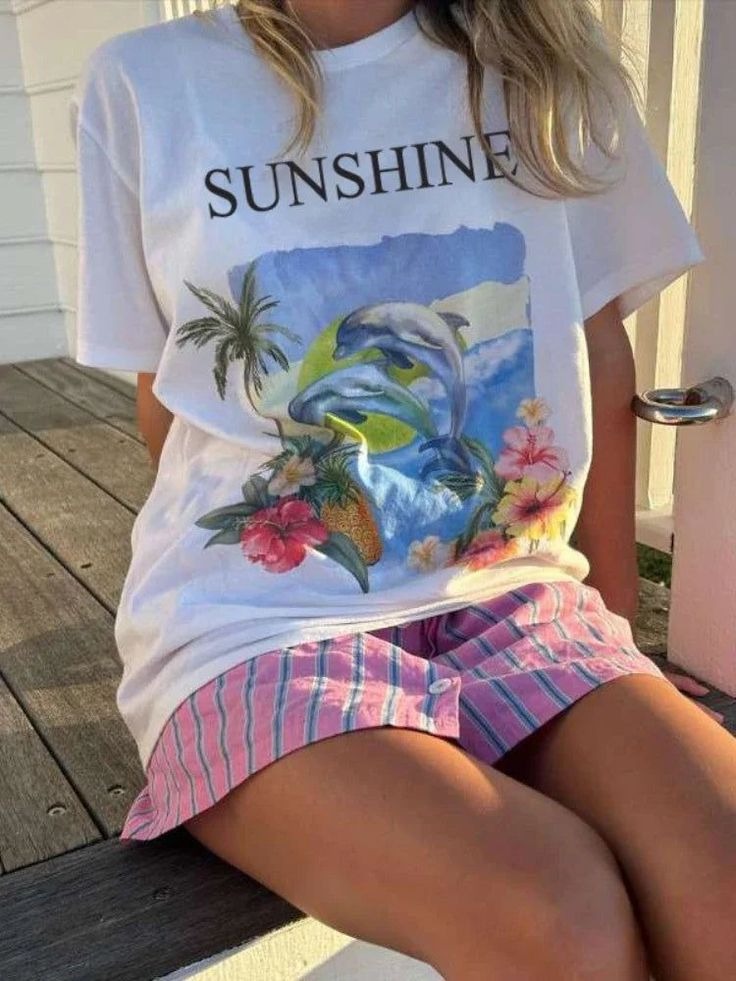Introduction
The t-shirt, at once unassuming and ubiquitous, occupies a singular place in the tapestry of global dress. Its simple silhouette—a knit torso, set-in or raglan sleeves, and a soft neckline—belies a staggering depth of historical resonance, technological innovation, and cultural significance. Unlike garments that speak only in the language of fashion, the t-shirt converses across disciplines, embodying stories of industrial revolutions and wartime exigencies, of mass-market commodification and intimate self-expression. As a canvas for art, activism, and corporate branding, it has carried messages as varied as countercultural manifestos and multinational logos. As a material artifact, it has borne witness to revolutions in fiber science, supply-chain logistics, and sustainable design. In this expansive treatise, we will embark on an odyssey through the t-shirt’s earliest antecedents, trace its transformation across global cultures, dissect its economic and ethical contours, and envision the smart, circular, and virtual futures that await this endlessly adaptable garment.
Early Origins and Industrial Foundations
In the mid- to late nineteenth century, the emergence of the t-shirt can be read as a response to profound shifts in labor, climate, and mechanization. Across the factories of Britain’s textile mills and North America’s burgeoning industrial complexes, workers endured stifling heat and unrelenting physical exertion, hemmed in by collar-and-cuff dress shirts inherited from previous centuries. Tailors and garment workers began experimenting with loosely knitted cotton jerseys—an innovation made possible by the development of circular knitting machines that churned out endless tubes of fabric. By eliminating collars, stiff cuffs, and heavy plackets, these pull-over underlayers offered unparalleled breathability, pliability, and ease of movement. Yet for decades they remained hidden beneath waistcoats and outer garments, their utilitarian function eclipsing any claim to public visibility.
Technological advances rapidly accelerated their proliferation. The mechanization of spinning and knitting dramatically reduced production costs, while the advent of mercerization—a chemical treatment that increased cotton’s luster, strength, and dye affinity—elevated jersey fabrics to new levels of quality. Pattern cutters refined the interplay between sleeve insertion, body shaping, and seam placement, minimizing bulk at the underarm and neckline. Even so, in the first decades of the twentieth century the t-shirt’s essential identity remained that of an undergarment: a private solution to the public problem of worker comfort, invisible to the world at large.
Wartime Adoption and Civilian Assimilation
When the First World War erupted, the t-shirt’s trajectory shifted abruptly. Naval commanders, grappling with the challenges of equatorial deployments, issued short-sleeved undershirts to sailors as a practical response to heat, humidity, and the corrosive effects of saltwater on woolen uniforms. The jersey knit, light and quick-drying, proved ideal for life at sea. Concurrently, on the battlefields of Europe, tank crews and pilots donned cotton-blend shirts to wick away moisture under heavy gear. In the trenches, layered beneath standard issue tunics, these jerseys offered a vestige of comfort amidst the turmoil of modern warfare.
With the war’s end in 1918, returning servicemen brought their undershirts ashore, wearing them as standalone tops in civilian life. The democratization of surplus military stock—sold off at bargain prices—flooded the postwar markets, introducing vast swaths of the population to a garment once confined to the realm of necessity. Rationing during the Second World War further entrenched the t-shirt’s ubiquity: governments directed textile mills to produce standardized cotton and cotton-rayon blends, while civilian factories pivoted to military contracts by day and war relief supplies by night. When peace returned, the surplus undershirt was no longer a novelty but an everyday staple, its familiarity erasing the last vestiges of peacetime obscurity.
The Rise and Resonance of Graphic Expression
The economic boom of the 1950s and 1960s heralded a new era in which the t-shirt shed its purely functional ancestry and emerged as a medium for mass communication. Blank white shirts became walking billboards for soda brands, athletic teams, and local businesses. Screen-printing workshops proliferated in urban centers, their stencils and squeegees transforming cotton jerseys into vibrant marquees of brand identity. By the late 1960s, political activists recognized the t-shirt’s potential for dissent. Hand-screened slogans demanding civil rights, peace, and environmental protection circulated through college campuses and protest marches, turning each wearer into a mobile advocate.
Music and youth culture further fueled the graphic revolution. Bands sold tour shirts adorned with psychedelic artwork, album covers, and concert dates—objects that converted fan devotion into wearable memorabilia. Designers experimented with tie-dye and discharge inks to produce kaleidoscopic gradients and vintage effects, while linocut and screen-print artists pushed the boundaries of fidelity and texture. As the t-shirt’s visibility grew, so did its power to signal affiliation: subcultures coalesced around specific prints and logos, forging communal identities that endured long after the concerts or protests ended.
Global Variations and Cultural Inflections
Though the t-shirt’s form has remained remarkably consistent, its surface has become a prism refracting the world’s manifold cultures. In West Africa, wax resist prints—renowned for their vivid colors and intricate patterns—have been incorporated into t-shirt panels, fusing traditional textile aesthetics with contemporary urban styles. South Asian artisans have applied centuries-old block-printing techniques to cotton knits, layering natural dyes in motifs drawn from mythic epics and folk lore. Japanese designers have infused the garment with the spirit of wabi-sabi, employing indigo shibori tie-dye, subtle distressing, and asymmetrical hems to create shirts that celebrate imperfection and transience. Scandinavian minimalists, meanwhile, have elevated the t-shirt to the realm of slow fashion, favoring organic linen-cotton blends in muted palettes and emphasizing texture, drape, and sustainable sourcing. From Buenos Aires’s graffiti-inspired stencils to Istanbul’s calligraphic typography, each locale has reimagined the t-shirt as a vessel for cultural storytelling and creative autonomy.
Technical Innovations: Fibers, Construction, and Print Technology
Underpinning the t-shirt’s outer diversity lies a ceaseless current of material and manufacturing innovation. Early jerseys knit from coarse cotton have given way to long-staple, extra-long staple, and Pima cottons prized for their strength, softness, and durability. Blended constructions—incorporating lyocell, modal, bamboo viscose, and recycled polyester—engineer garments for moisture management, odor resistance, and reduced environmental impact. The advent of seamless knitting now enables single-piece torsos tailored to specific body contours, minimizing waste and enhancing wearability.
Printing technologies, too, have been revolutionized. Water-based inks and low-impact pigment dispersions offer vivid, wash-fast prints without the environmental toll of traditional plastisol processes. High-definition direct-to-garment (DTG) printers reproduce photographic detail and continuous-tone gradients that once eluded screen-printing, all without minimum order requirements. Laser cutting and ultrasonic bonding techniques create precision trims and fray-resistant edges without single-use threads. Together, these advances point toward fully digital workflows—from design file to finished garment—shrinking lead times and enabling infinite customization.
Economic Scale, Supply Chains, and Market Dynamics
Annually, the global t-shirt market churns out billions of units, making the garment a linchpin of the apparel industry. Manufacturing hubs in Bangladesh, Vietnam, Turkey, and Central America coordinate spinning, knitting, dyeing, cutting, and sewing operations that deliver shirts en masse to brands spanning fast-fashion giants and direct-to-consumer independents. E-commerce platforms have compressed fulfillment expectations, driving next-day or same-day delivery models that challenge traditional inventory paradigms. Simultaneously, flash-sale apps and limited-edition drops have incubated new forms of hype marketing, where scarcity and exclusivity propel resale markets into the thousands of dollars for rare graphic tees.
Yet this scale and speed come at a cost. Supply-chain opacity often obscures labor conditions, while just-in-time inventory systems risk stockouts or overstock waste. Cotton price volatility, influenced by climate extremes and commodity markets, intersects with geopolitical trade tensions, prompting some brands to nearshore production to Mexico and Eastern Europe. Others pursue vertically integrated models—owning or closely partnering with every step of the process from fiber to storefront—in pursuit of transparency and quality control. Consumers now demand both immediacy and ethical clarity, pressuring brands to disclose factory audits, carbon footprints, and raw-material origins.
Ethical Imperatives and the Quest for Circularity
The t-shirt’s environmental footprint looms large in the broader narrative of fast fashion. Conventional cotton cultivation consumes thousands of liters of water per kilogram of fiber, while pesticide-intensive practices degrade ecosystems. Dyeing and finishing facilities generate effluent rich in heavy metals and chemical residues, threatening water quality for adjacent communities. On the consumption side, market research indicates the average t-shirt is worn fewer than twenty times before being discarded, contributing to textile waste streams that fill landfills and incinerators.
In response, brands and activists champion systemic shifts toward regenerative agriculture—rotating cotton fields with cover crops to rebuild soil carbon—and closed-loop water systems that recycle dye effluent. Certifications such as the Global Organic Textile Standard (GOTS) and Fair Trade Textile Standard aim to codify responsible practices from farmworker livelihoods to factory emissions. Take-back programs and garment-to-fiber recycling technologies repurpose post-consumer shirts into new yarns, though chemical recycling processes remain energy-intensive and costly. Emerging biodegradable fibers—such as polylactic acid (PLA) derived from plant starches—offer promising pathways to reduce persistence in landfills, yet must overcome hurdles of performance parity and price competitiveness. True circularity will demand collaboration across stakeholders—farmers, manufacturers, retailers, policymakers, and consumers—to internalize environmental costs and redefine value beyond the lowest purchase price.
Customization, Maker Movements, and the Democratization of Design
Even as mass production accelerates, the t-shirt’s essence as a personal canvas continues to thrive at the grassroots. Desktop DTG printers empower home-based entrepreneurs to produce full-color shirts on demand, eliminating inventory risk and levering real-time design tweaks. Makerspaces and co-operative print studios grant access to traditional screen-printing presses, specialty inks, and heat-press vinyl cutters, fostering communities of practice around artisanal garment crafting. Online configurators and augmented-reality mockups allow customers to rotate, resize, and recolor graphics before placing orders, deepening engagement and co-creation. For grassroots campaigns—fundraisers, local sports clubs, political movements—the t-shirt remains the most accessible medium for forging collective identity and raising visibility.
Psychological and Sociological Dimensions of Wearability
The power of the t-shirt extends beyond form and function into the realm of “enclothed cognition”—the idea that our garments influence our psychological states and social interactions. Studies in environmental psychology suggest that clothing can modulate self-confidence, approachability, and even perceived competence. A political protest shirt can amplify feelings of agency and solidarity, while a branded corporate tee fosters group cohesion among employees. Celebrity-endorsed merch catalyzes parasocial bonds, with fans donning tour tees to feel closer to their idols and to signal membership in a global fandom. In social movements, uniform t-shirt colors and prints generate striking visual spectacles that amplify collective messages to external audiences. The t-shirt’s proximity to the skin imbues it with a sense of authenticity and vulnerability unmatched by more formal attire.
The Digital and Virtual Wardrobe
As our lives increasingly unfold in digital realms, the t-shirt has migrated into virtual environments. Video-game avatars don branded tees, blending real-world logos with fantasy emblems. Fashion houses experiment with non-fungible tokens (NFTs) tied to exclusive digital wearables, granting owners both a unique virtual asset and often a physical counterpart. Augmented-reality shopping apps let users “try on” virtual shirts via smartphone cameras, capturing social-media-ready images and linking directly to purchase portals. Virtual pop-up shops in metaverse platforms host limited charity drops, celebrity collaborations, and avatar fashion shows, translating the hype cycles of streetwear into 1s and 0s. As blockchain-based provenance tracking matures, consumers may soon verify a shirt’s entire lifecycle—from cotton field GPS coordinates to sewing-line batch numbers—through immutable digital ledgers.
Emerging Technologies: The Smart Shirt Frontier
Perhaps the most transformative prospects for the t-shirt lie in smart textiles and wearable interfaces. Conductive fibers woven into cotton blends can transmit biometric data—heart rate, breathing rate, muscle exertion—to mobile devices, enabling health monitoring without obtrusive wristbands or chest straps. Photochromic and thermochromic inks respond to UV exposure and body heat, animating graphics that fade or intensify with changing conditions. Integrated haptic feedback modules could deliver gentle vibrations for navigation prompts or incoming call alerts. Lab-grown cellulose fibers, cultivated in bioreactors, promise cotton-like hand feel without cropland use, while microfactory robotics and additive manufacturing herald hyper-local, on-demand production that slashes transportation emissions and lead times. In this scenario, the humble t-shirt becomes an interactive interface—a touchpoint between our digital ecosystems and our physical selves.
Challenges and Pathways Forward
Despite this horizon of possibility, formidable challenges remain. Ensuring data privacy and cybersecurity in sensor-laden garments will require new standards and regulations. Scaling sustainable fiber innovations without prohibitive cost increases demands continued investment in R&D and supportive policy frameworks. Educating consumers to value durability, reparability, and circularity over fast-fashion novelty is a cultural undertaking as much as an economic one, requiring targeted incentives and transparent reporting. Brands must navigate evolving chemical regulations, waste management directives, and carbon-accounting protocols to maintain both compliance and competitive edge. Yet these obstacles also present opportunities: collaborative consortia can pool resources to build recycling infrastructure, multi-stakeholder initiatives can forge cross-sector standards, and storytelling can shift consumer mindsets toward mindful consumption.
Conclusion
From its clandestine beginnings as a hidden undergarment to its ascension as a global canvas for identity, protest, and technological experimentation, the t-shirt embodies the dynamic interplay of comfort, creativity, and conscience. Its essential simplicity has made it endlessly adaptable—welcoming layers of meaning from every region and subculture, and serving as a bellwether for innovations in fiber science, manufacturing, and digital integration. As we stand at the threshold of smart textiles, circular economies, and virtual wardrobes, the t-shirt remains both a touchstone of our shared past and a foil for imagining our collective future. In every thread, print, and sensor lies a story of human ingenuity, aspiration, and solidarity—an infinite canvas upon which we continue to map the contours of culture, commerce, and community.




Leave a comment